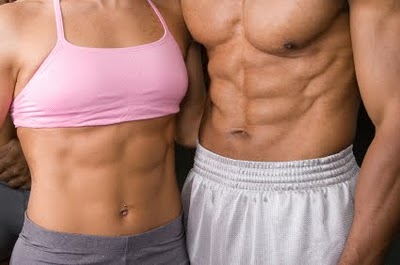

Click Here For Your Free Ripped Muscle Magazine Subscription
Meal Frequency
Most of us have been raised to eat three meals a day, progressively increasing the amount of food as the day goes on. The typical American has a small breakfast (if at all), a medium-sized lunch, and a large dinner, which usually includes dessert. Many of us still have the idea that snacking is bad--we were taught it would ruin our appetite. Unfortunately, these eating patterns make it very difficult to manage our weight.
By Chad Tackett, president of GHF
Eat Regularly and Less as the Day Goes on
The frequency of how often we eat per day has been shown to greatly affect how fat we are.
Many studies have concluded that those who eat four to six smaller meals per day have less
body fat than those eating two or three meals a day, despite the fact that both groups eat
about the same amount of calories. In addition, eating patterns of three or more meals a
day may also have a positive effect on blood cholesterol and triglyceride levels, which
are usually lower than levels from one or two meals a day. A calorie is not the same
calorie at different times of the day; calories consumed at dinner and later are more
likely to be stored than those consumed in the morning or mid-day, simply because we are
less active at night.
Eating only three times a day requires us to go too long without eating. By the time lunch
or dinner rolls around, we are so famished we eat anything easily available. Eating small,
healthy snacks in between meals not only prevents you from gorging; it increases your
metabolism and helps you feel energized and satisfied throughout the day.
It is also important not to eat too much at each of these snacks and meals but rather just
enough to feel satisfied and energized. However, if you do eat too much (beyond being
pleasantly full), don't feel guilty; focus on the present moment rather than the past. And
certainly don't eat again just because it is dinner time--eat only when you feel the need
to eat. If you are not as hungry at dinner time, eat a smaller portion than you are used
to--eat according to your level of hunger--not just because "it is time" or
"that is how much I usually eat at dinner." Likewise, it is important not to eat
snacks if you are not physically hungry. Always pay attention to your internal signals of
hunger. It is crucial that you experience comfortable hunger. If you are constantly eating
just to eat, you will never experience true hunger and not learn to respond to your
internal hunger signals. If you have been dieting, you are probably out of touch with what
true hunger is.
Food high in fat can mask physiological hunger signals because the emptying of the stomach
is delayed due to the high fat content. Making small changes and decreasing the amount of
fat you eat in foods will help you attend to physiological hunger. In time, your food
choices will reflect new preferences that are lower in fat, allowing you to acknowledge
more accurate hunger signals.
Eating a large meal increases the opportunity for fat cells to extract fat from the blood
and, therefore, grow bigger. Fat cells can actually adapt to a pattern of large,
infrequent meals by becoming more efficient at storing fat.
In addition, a two-to-three-meal a day pattern causes the body to face long stretches
without food. This eating pattern actually tricks the body into thinking it's in a
starvation state, initiating physiological changes that actually slow down your body's
resting metabolic rate, the number of calories "burned" at rest. This occurs
because your body is trying to conserve energy for fear of starvation. A reduction in
metabolic rate slows fat loss. This is another reason why diets do not work. Our body
responds to the reduction in calories as if it were starving and your metabolism slows
down. Once again, if you are trying to lose fat by decreasing your caloric intake, it is
best to eat small meals and snacks four to six times a day so your metabolic rate will
stay "revved" up throughout the day, making fat loss and/or maintenance a much
easier and healthier task. Of course, be sure that the meals are nutritious,
well-balanced, and low in fats and simple sugars. If you eat four to six meals a day and
don't eat healthy, low-fat foods, you are missing the big picture.
In addition to eating smaller meals more frequently, try to plan so that you don't eat
your largest meal of the day late at night. The body's metabolic rate has a natural cycle
of highs and lows, peaking late in the day and dropping to its lowest level during sleep.
It makes sense to avoid putting a large meal into your system after 8:00 at night when
your metabolic rate is beginning to slow down. If you do feel hungry after this time, you
don't need to go to bed hungry, just try to eat something especially healthy and in small
portions. If it is not possible to avoid a later dinner, eat a snack around 6:00 p.m. so
you won't be so hungry later. I hope this helps and you have the opportunity to enjoy all
the wonderful benefits of a healthy, active lifestyle.
About Chad Tackett
Chad Tackett, the President of Global Health and Fitness (GHF), has degrees in Exercise
and Heath Science and Nutrition, is a Certified Personal Trainer, and is a regular guest
lecturer to both professional and lay audiences on the principles of effective exercise
and eating habits. Visit https://www.global-fitness.com and you'll find easy to follow
fitness recommendations, hundreds of exercise instructions and video demonstrations,
customized programs, healthy recipes and cooking/shopping strategies, health club/personal
trainer directories, and much more!